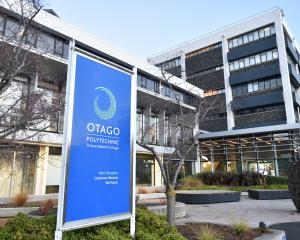
Planning for the new facility was already based on some heroic assumptions about how many patients could be treated by primary care rather than in the new hospital.
Those assumptions have been stretched still further by the acceptance by Te Whatu Ora Health New Zealand of $90 million worth of cuts to the complex, in exchange for a boost in its budget to $1.58 billion.
As well as potentially compromising the future care of some of the most vulnerable southerners, the cuts include operational trade-offs such as a reduction of meeting spaces and the elimination of one of the two planned access bridges between the inpatient and outpatient buildings.
The current Dunedin Hospital is already a difficult building for staff — let alone patients — to navigate around and in many places lacks rooms appropriate for personal or confidential conversations: design of the future facility runs the risk of being hamstrung by similar problems which have dogged the present one.
After initially embarrassingly stalling at the starting line, Dunedin city councillors and Mayor Jules Radich have come out firing, and are likely to demand that the Government builds the new hospital to the specifications originally planned, and offering all the promised services, beds and operating theatres.

Clutha, Waitaki, Invercargill and the Otago Regional Council have harkened to Mr Radich’s rallying cry, while Central Otago is considering it and other district mayors have yet to show their hands.
The collective regional voice is important because, as the mayors recognise, while it might say Dunedin Hospital on the door, a large percentage of its patients will be travelling from throughout the region for treatment.
As well as coming to Dunedin for planned or acute procedures, the Otago and Southland rescue helicopter fleet regularly flies emergency cases to the city, and its wards will also be critical if a major event swamps the wards of other South Island hospitals.
A fully functioning Dunedin Hospital also has national health system implications, given the close alignment between the facility and the medical schools which train many of the country’s doctors, nurses and allied health professionals.
Representatives of those clinicians have been battling behind closed doors for several years for the new Dunedin Hospital to open with the appropriate range of services in a medically suitable space which will be sufficient to meet the needs of future generations.
Those efforts will now be taken on by the wider community which has shown before, such as during the campaign to retain neurosurgery services at Dunedin Hospital, that it is ready and willing to stand up and demand the provision of appropriate healthcare.
The mayors have demanded a meeting with Finance Minister Grant Robertson — who will well recall the neurosurgery campaign — and Prime Minister Jacinda Ardern to discuss the cuts.
The politicians are on holiday just now but it does the region no harm for the mayors to stake their claim nice and early — time with government leaders is a precious commodity, especially in an election year.
That contest is shaping up as a close one and National has already criticised Labour’s trimming on the new hospital.
Both Ms Ardern and Mr Robertson have previously extolled the huge investment in Otago and Southland that the new Dunedin Hospital represents.
They are right, and no-one is ungrateful . . . but the steel and plaster board is one thing and the services and people within are quite another.
What the South wants, and what the South is entitled to expect, is a facility which will be fit for use when it opens and which will be appropriately adaptable for future need.












